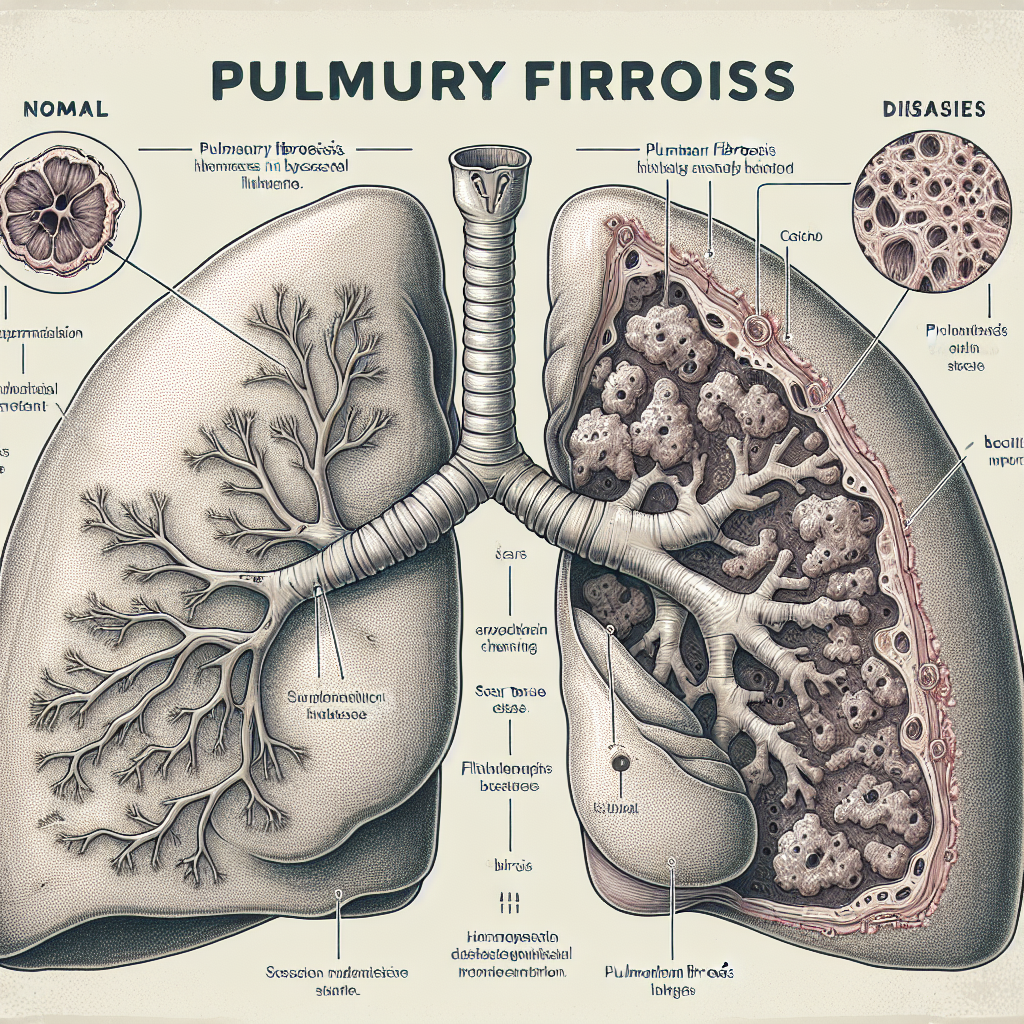Pulmonary fibrosis is a lung disease that arises when the lung tissues become damaged and scarred. This scarring results in the tissue becoming thick and stiff, making it difficult for the lungs to function properly. As the disease progresses, individuals often find themselves increasingly short of breath. The overview to understanding pulmonary fibrosis will enable you to differentiate symptoms, identify risk factors, and get to know about treatment methods that can assist and improve conditions.
What is Pulmonary Fibrosis?
The term ‘pulmonary’ pertains to the lungs, and ‘fibrosis’ means a scarring condition. Therefore, pulmonary fibrosis occurs when the lung tissues exhibit extreme levels of scarring, resulting from long-standing inflammation or injury. This scarring results in the thickening and hardening of lung tissues, impeding the oxygen absorption in the blood.
Symptoms of Pulmonary Fibrosis
Early symptoms of pulmonary fibrosis include shortness of breath, especially during or after physical activity, and a dry cough. As the disease advances, other symptoms like fatigue, weight loss, muscle and joint pain, and clubbing (widening and rounding) of fingers or toes may surface.
Causes and Risk Factors of Pulmonary Fibrosis
Multiple factors contribute to the development of pulmonary fibrosis. Factors like exposure to pollutants, including silica dust, asbestos fibers, hard metal dust, coal dust, bird and animal droppings, radiation treatment, certain medications, and medical conditions like pneumonia can trigger this disease. However, in most cases, the cause remains unknown, a condition termed as idiopathic pulmonary fibrosis.
Pulmonary fibrosis risk escalates with age, especially for people between ages 40 to 70. Factors like smoking and certain genetic mutations can also render vulnerability to the disease.
Treatment of Pulmonary Fibrosis
While pulmonary fibrosis is uncurable, various treatment options are available to ease the symptoms, slow disease progression, and improve the quality of life. The medications include anti-fibrotic drugs and steroids to suppress the immune system. Oxygen therapy aids in easy breathing, while pulmonary rehabilitation helps with exercise and breath training, dietary guidance, and emotional support.
Conclusion:
Understanding pulmonary fibrosis involves recognizing the symptoms, understanding its causes, and knowing available treatment methods. While it’s a long-term and progressive disease, the quality of life can still be improved through medical intervention and lifestyle adjustments. By maintaining a healthy lifestyle, staying active, getting vaccinated against pneumonia and influenza, and avoiding lung irritants, one can manage the disease and keep it under control.
FAQs about Pulmonary Fibrosis
1. What is the life expectancy of someone with pulmonary fibrosis?
Life expectancy generally varies according to individual health conditions, extent of lung impairment, and response to therapy. Some people live many years with the disease, while others may have a life expectancy of fewer than three to five years.
2. Can pulmonary fibrosis be cured?
As of now, there is no definite cure for pulmonary fibrosis. However, medications, therapy, and other treatments can help alleviate symptoms, slow disease progression and improve quality of life.
3. Is pulmonary fibrosis a hereditary disease?
Although rare, pulmonary fibrosis can sometimes be hereditary. Certain mutations in genes can make individuals susceptible to developing pulmonary fibrosis.
4. What are the early warning signs of pulmonary fibrosis?
The early warning signs are typically shortness of breath, especially during or after a physical activity and dry cough. Symptoms like fatigue, weight loss, and muscle and joint ache gradually surface as the disease progresses.
5. Can exposure to certain substances increase the risk of pulmonary fibrosis?
Yes, exposure to certain hazardous substances like silica dust, asbestos fibers, coal dust, bird, and animal droppings can trigger pulmonary fibrosis.

Leave a Reply